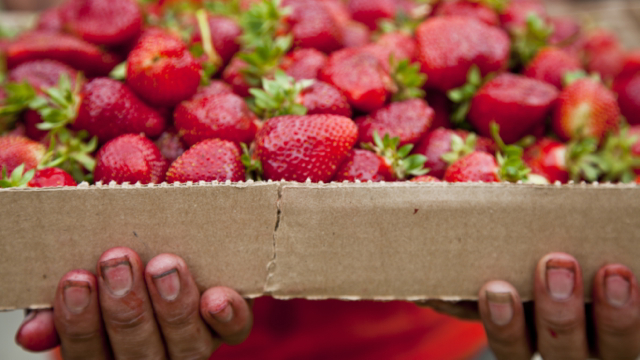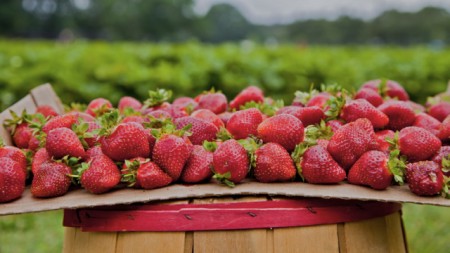It’s not your fault, gardeners. Strawberries are not very well suited to this hot, dry climate. That’s why your garden-variety strawberries probably don’t look -- or taste -- much like the plump varieties found at farm stands or grocery stores. But help is on the way.
The fact is, the North Carolina climate is hostile to the so-called “love fruit.” These delicate seed receptacles are more suited to temperate climates, like coastal California, where cool, moist nights help the plant thrive. But strawberries can flourish in more extreme climates, thanks to science and “North Carolina is able to grow strawberries because of all the science and technology that is devoted to the crop,” said Debby Wechsler, executive secretary of the North Carolina Strawberry Association. “It’s really what is known as intense management. It takes a lot of care. It’s not like you just throw them out and let them grow.”
A good example of that intense management can be seen on the Waller Family Farm in Durham, NC. Mark Waller farms 40 acres of strawberries on what used to be a tobacco farm. Customers can pick their own strawberries or visit the market he runs during the strawberry season, which lasts anywhere from April through June.
“Once we see about eight to ten blooms per plant, we really pick up the intensity around the farm,” said Waller. “Not only are we fertilizing but we are also really watching for frost.”
And that’s where North Carolina State University Professor Emeritus Barclay Poling’s research comes in.

